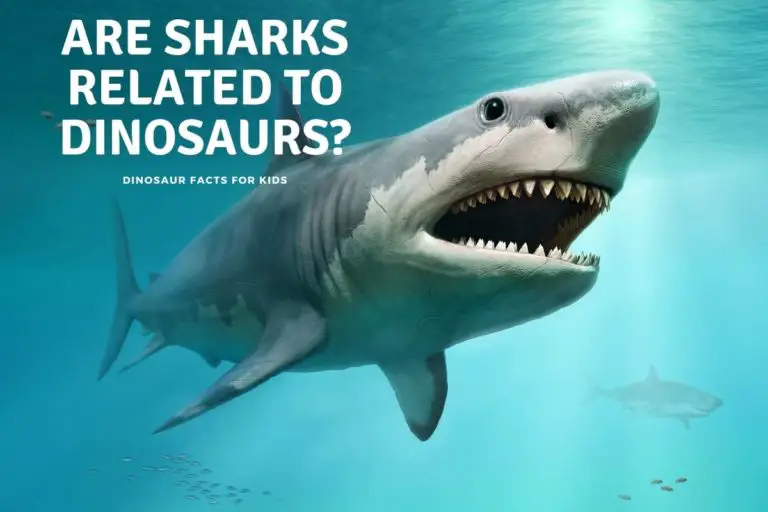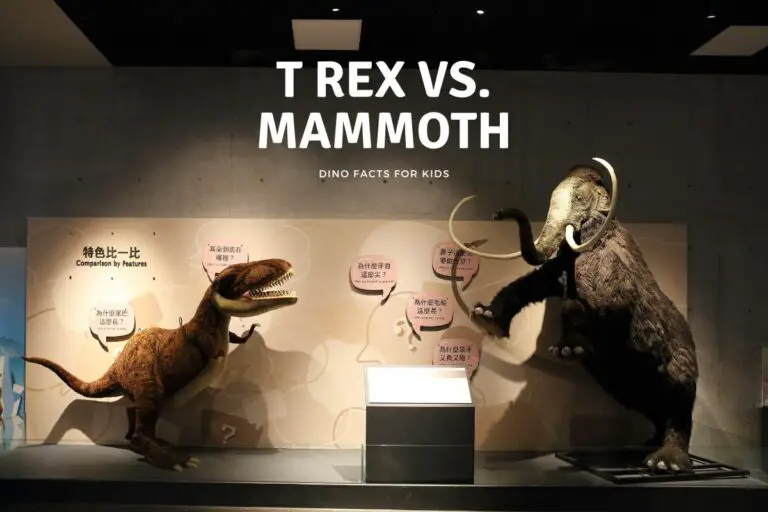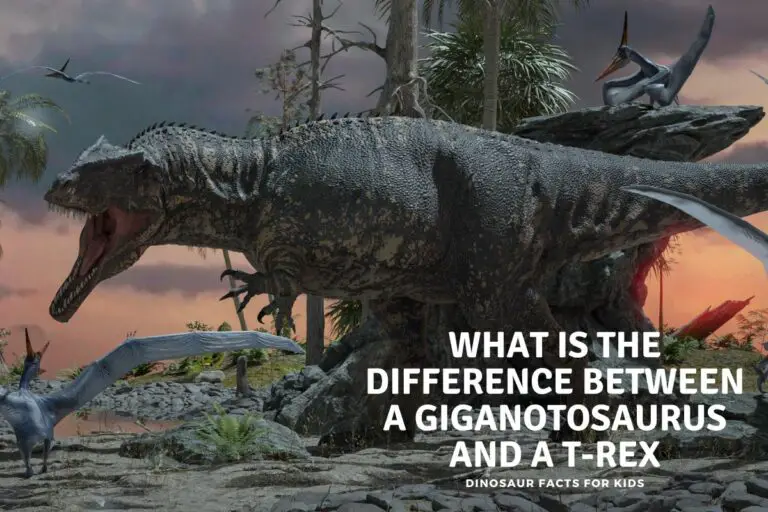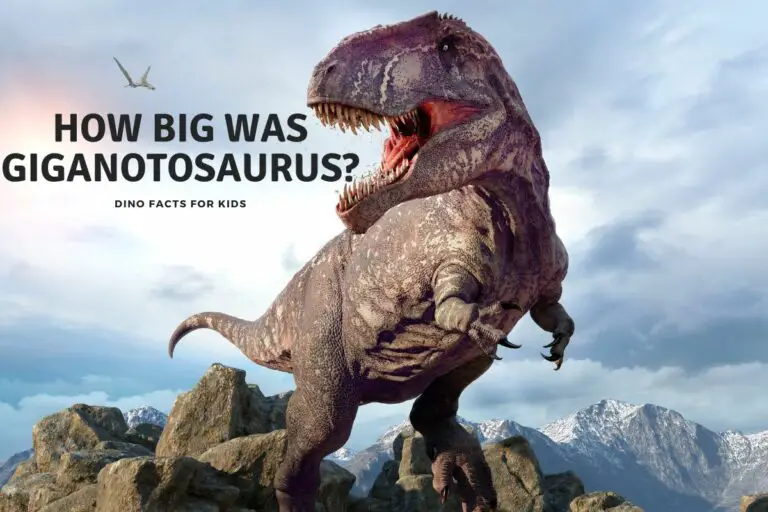Are Turtles And Dinosaurs Related?
Turtles evolved as a distinct species some 110 million years ago. A giant species of sea turtles lived about 80 million years ago during the Cretaceous period. These giant turtles grew to four meters in length and had a flipper span of five meters.
Turtles belong to a group of animals called Archosauria and are related to birds, crocodiles, lizards, and dinosaurs. Turtles are classified as reptiles which links them to the dinosaur family, however the relationship is millions of years old. Their common ancestor was most likely a reptile lizard-like creature.
We base our findings on the fossil records of the Mesozoic era, during which the dinosaurs first appeared late in the Triassic period. Most life that evolved during the Late Triassic and Jurassic periods share a common ancestor. Let’s look at how turtles evolved from their distant dinosaur ancestors.
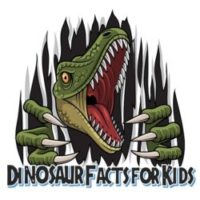
Turtles Are Not Dinosaurs, But They Are Related
Dinosaurs and turtles are thought to have evolved from the common lizard-like ancestor over 260 million years ago, with Turtles emerging first. So they share the reptilian ancestry with turtles but evolved along a uniquely different path to the turtle and did many other animals at the time. It is therefore not correct to call turtles dinosaurs. Turtles and dinosaurs are descendants of a common reptilian ancestor.
They are both Archosaurs and descend from them. We explain what an archosaur is below.
An Archosaur is a vertebrate meaning it has a backbone. It included a large group of reptiles like the dinosaurs, pterosaurs, turtles and today includes birds and crocodiles These evolved about 250 million years ago.
It has been a huge mystery on where turtles fitted onto the evolutionary tabel but in recent years it appears to be settling that while related dinosaurs and turtles are not “from” each other and actually evolved from a distant relative in two different directions. Both directions very successfully it has to be said!
The earliest turtle-like lizards, the Eunotosaurus, evolved in the late Permian and early Triassic period some 260 million years ago. They were slow crawling reptiles with a broad ribcage and a rigid spine and looked a little chubby. They are thought to have burrowed underground for shelter and protection.
Eunotosaurus africanus is the oldest known turtle to have lived, but it had not developed a shell as yet. The turtle had elongated trunk vertebrae and nine pairs of broad flat dorsal ribs, and five pairs of abdominal ribs. So it was becoming the shape of a turtle, but without a shell.
It is thought that these broad, flattened ribs evolved to form the carapace (top shell) and plastron (bottom shell) of the turtle. Pappochelys was the first turtle to boast a fully developed protective shell about 240 million years ago.
The broad flat shape of the turtle initially evolved to assist the animal in burrowing underground than for protection against predation. However we take a look at this in more detail below.
Did Turtles and Dinosaurs Live Together?
Turtles and dinosaurs are part of the “Real Reptiles” or Eureptilia family, along with birds, lizards, and snakes. Some have argued that the turtles may have evolved from the Parareptilia or “Side Reptiles,” a group that contained the first aquatic reptiles.
The earliest common ancestor was a reptilian lizard that evolved along with several branches in a period between 280 million years ago and 66 million years ago, where turtles and dinosaurs lived and evolved side by side.
The ability of turtles to be expert burrowers is most likely the reason that they survived the extinction event that brought an end to the 170 million year reign of the dinosaurs as the dominant species on the planet.
The impact caused by the 11-kilometer wide meteor resulted in the cataclysmic destruction of most species living above ground and in the oceans. Massive tsunamis, earthquakes, and volcanic eruptions laid waste to the habitable zones of the planet, and only about 25 % of all species survived.
The ancestors of the turtles, birds, lizards, snakes, and crocodiles continued to live after the meteor impact. They soon began to thrive as nature recovered and the threat of the dinosaurs was no longer present.

What Did Dinosaurs And Turtles Have In Common
Reptiles are air-breathing vertebrates with their eggs internally fertilized and mostly lay eggs. They are covered in epidermal scales or plates which cover all or most of their bodies.
The major groups of reptiles are:
Living Reptiles:
- Testudines – turtles
- Rhynchophalia – tuatara
- Squamata – lizards and snakes
- Crocodilia – crocodiles
- Aves – birds
Extinct Reptiles:
- Marine plesiosaurs
- Pliosaurs
- Ichthyosaurs
- Pterosaurs
Birds are thought to be the descendants of the dinosaurs, and they developed into warm-blooded animals, but the majority of modern reptiles are still cold-blooded animals. Only the Leatherback Turtle has evolved to be a warm-blooded animal and is the only exception in the turtle kingdom that is different in this respect to dinosaurs.
What Was the Oldest Turtle?
Although turtles can live very long lives indeed, the oldest was called jonathan who is a seychelles Giant Turtle and lives in the Seychelles at the Governors house where he has since 1882!! He moved then he was around 50 years old. that makes him at least 190 years old and the oldest living land animal we know about.
There was also a turtle that Charles Darwin himself brought from the his legendary voyage on the Beagle in 1835 that lived until 2006, It was in the Australia zoo owned by Steve Irwin and was called Harriet.
Unfortunately even though turtles have the longest lives of any land animal none of them could live long enough to see their earliest ancestor. The first Turtles lived longer ago than even the oldest of the dinosaurs around 260 million years ago. So a better question is what was the earliest turtle we know about. We answer that below!
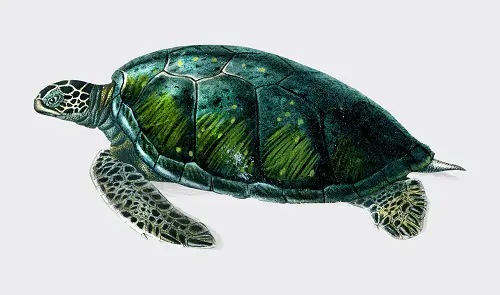
What Was the Earliest Turtle?
The oldest turtle we know about was called Eunotosaurus and lived in what is now Southern Africa. it lived 260 million years ago and was a descendant of the reptiles that came before the archosaurs. In fact studies at Yale university have shown that turtle may be more related to birds (really) and crocodiles than snakes and lizards maybe it’s time to take them out of the reptile house and but them in the Aviary!!
Eunotosaurus didn’t look much like a turtle as you would see today. They were starting to look a little flatter, the great quote is like a lizard had swallowed a frisbee! and they had a mouthful of teeth as well. That fat belly as actually its ribs starting to get broader and it is often thought of as a missing link between earlier primitive reptiles and later more recognizable turtles.
What Was The First Turtle to Have a Shell?
Around 240 million years a go Turtles were starting to look a lot more like turtles we would recognize today and less like chubby lizards. As we mentioned above Pappochelys ( whose name means grandfather turtle quite cutely!) was developing a more obvious shell around this time although it would still be mistaken for that chubby lizard.
After pappochelys, again 20 million years later, came Odontochelys. Now we are gettign to animals that would look more like a turtle. ( one from nightmares though) Its shell, or hard parts of one, only were on the bottom at this stage and its still had a mouth full of teeth!
So lets move on to find our first turtle that had a full shell. It took 10 million years of evolution to take that belly shell and make it cover the whole body. We find the first full shell in the Proganochelys which lived 210 million years ago. Now these earlier turtles were not necessarily all related to each other ( it just gives us an idea of the time period that shells were evolving) and the Proganochelys, is the oldest turtle that has been found with a full shell.
it was about 3 feet long and it was starting to form a beak although it still had teeth in the back of the mouth. If you were to spot it swimming ( and with how long turtles can live who knows!) you would think hmmmm that turtle has long legs, but not much more.
Turtles found what worked for them soon ( well million of years) after that and have stuff with it ever since. Pretty much the same as Crocodiles.
What was the Largest Dinosaur Turtle
Although Turtles were not dinosaurs they could certainly grow as big as them. The largest known turtle was a sea turtle and was called Archelon. it didn’t have a hard shell like other turtles it was more leather backed and touch rather than hard.
it also had developed the beak that other turtles didnt a hundred or so million years ago, and although that sounds less scary and scientists think it was used for crushing and to eat crustaceans, and may ammonites it may also have been sued to cut flesh and eat fish and other reptiles.
Considering Archelon could be 15ft long and 5000 lbs it would be important to know what food it ate! However it is now extinct having lived during the late cretaceous 80-70 million years ago.
What is the Largest Turtle Today?
Just as an aside we will tell you this. Knowing that there is not a 15ft 5000lb possibly meat eating turtle swimming in the sea today is certainly a relief, but the largest turtle alive today is no slouch in size either. the Leatherback sea turtle can grow to 2 metres and be over 1000 lbs.
Luckily these turtle eat almost entirely jellyfish, so we are safe from them. Unfortunately they are not safe from us, both directly from hunting and indirectly from the plastic bags they confuse for jellyfish.

Why Turtles, Crocodiles, And Birds Survived The Dinosaur Extinction?
A massive meteor struck the earth some 65 million years ago, resulting in the near-total destruction of all land-based fauna and flora. Massive tsunamis, earthquakes, and volcanic eruptions laid waste on the land. During the period following the meteor’s impact, vast amounts of dust and sulfur oxide filled the upper atmosphere.
The sunlight was blocked entirely out from reaching the surface of the planet, resulting in plants dying off as photosynthesis was no longer possible. Some of the megafaunas that survived the meteor impact died of starvation. The ocean became acidic as it dissolved the toxic gasses.
The extinction was, however, limited to species. Animals that could live underground and survive on a diet of roots and insects managed to survive. Small mammals, reptiles, and insects would thrive as the earth recovered, and there was no longer the threat of dinosaurs to contend with.
The survivors of the great cataclysm would go on to evolve and repopulate the earth. They would evolve into the population of fauna and flora living on planet earth today. Some of those were the turtles. Coldblooded, out at sea and out of the way certainly helped them survive the effects of the extinction.
There were some subsequent ice ages, massive volcanic eruptions, and even meteor impacts, but nothing matched the scale of destruction of the meteor that killed the dinosaurs.
During the past twelve thousand years, the stability of the climatic conditions on the planet resulted in an explosion of species and the evolution of modern man, living side by side with animals such as crocodiles, turtles, sharks, snakes, and birds.
The modern epoch, past 200,000 years, is known as the Anthropocene, named after the age of humans. In the 1800s, the total population of humans on the planet was estimated to have been one billion. Today our numbers are fast approaching eight billion and are forecast to reach eleven billion by 2100.
The impact we have had on the fauna and flora sharing this planet has been devastating. The rate at which species are going extinct is so fast that the scientific community has announced the start of the Sixth Mass Extinction.
Likely, old species such as turtles and crocodiles will successfully survive the warming of the earth’s climate again. Humans may not be so lucky.
Case of Mistaken Identity: Dinosaur or Turtle.
If we were to ask you which dinosaur fossils had been mistaken for being turtles you would be forgiven to mentioning the two most obvious dinosaurs. the ankylosaurus and the stegosaurus.
Both of these dinosaurs were armoured like a turtle, and they both were pretty big. In fact the stegosaurus was called roof lizard when it was discovered as it was thought that those plates on its back were flat and protected it like a shell!
the ankylosaurus of course was covered in bony bumps that when found would have looked just like a huge turtles shell. However it wasn’t either of these dinosaur. In fact is was a dinosaur discovered much later called the therizinosaurus (which we have more information on here), and makes an appearance in Jurassic World Dominion.
Discovered in 1948 in Mongolia ( so many feathered dinosaurs are found there!) the only thing found were the the 3 ft long massive claws of the therizinosaurus and incorrectly assumed, 6 years later, that is was actually a massive 15ft seaweed cutting turtle! – That’s quite a leap from the 30ft long feathered dinosaur it actually was!
It does go to show that even experts can get it wrong, and when it comes to dinosaurs there is much more we don’t know that we do know!
We have a few in a series of articles about other animals that may or may not be related to dinosaurs on the site, some are listed below. Feel free to take a look.
- Are Chickens dinosaurs?
- Are Alligators dinosaurs
- Are Sharks related to dinosaurs
- Are lizards related to dinosaurs
- Are crocodiles related to dinosaurs
- Is a rhinoceros a Dinosaur?
Conclusion
So Turtles are related to dinosaurs, but in the same way many different animals living then and even now are. they share a common ancestor from over 260 million years ago. However Turtles are not dinosaurs, and turtles did not come from dinosaurs.
Turtles have been on the planet longer than dinosaurs ever were and as we can see from them living to be over 150 years old as an animal and over 260 million years as a species Turtles are certainly built to last! Maybe its that hard shell!! i
References:
https://youtu.be/fLjXIFvafSE – How a turtle got its shell
https://news.yale.edu/2014/05/05/study-finds-turtles-are-closer-kin-birds-crocodiles-lizards-snakes
https://royalsocietypublishing.org/doi/10.1098/rsbl.2012.0331
https://www.britannica.com/animal/reptile
Hi, I am Roy Ford a General Studies and English Teacher who has taught all over the world. What started as a fossil collection became a great way to teach, motivate and inspire students of all ages and all over the world about dinosaurs and from that and children’s love of dinosaurs came the site dinosaur facts for kids, a resource for all ages.

